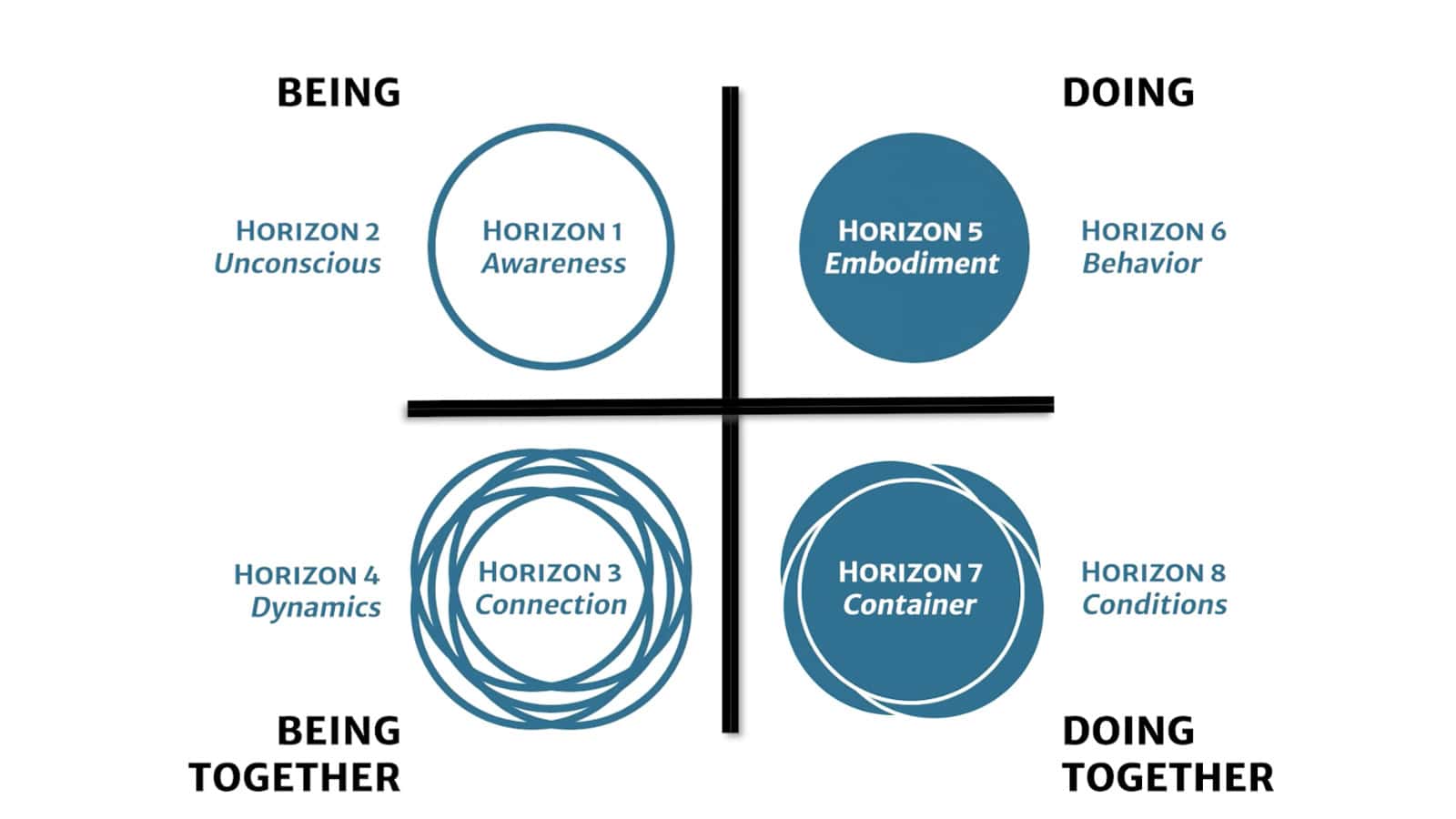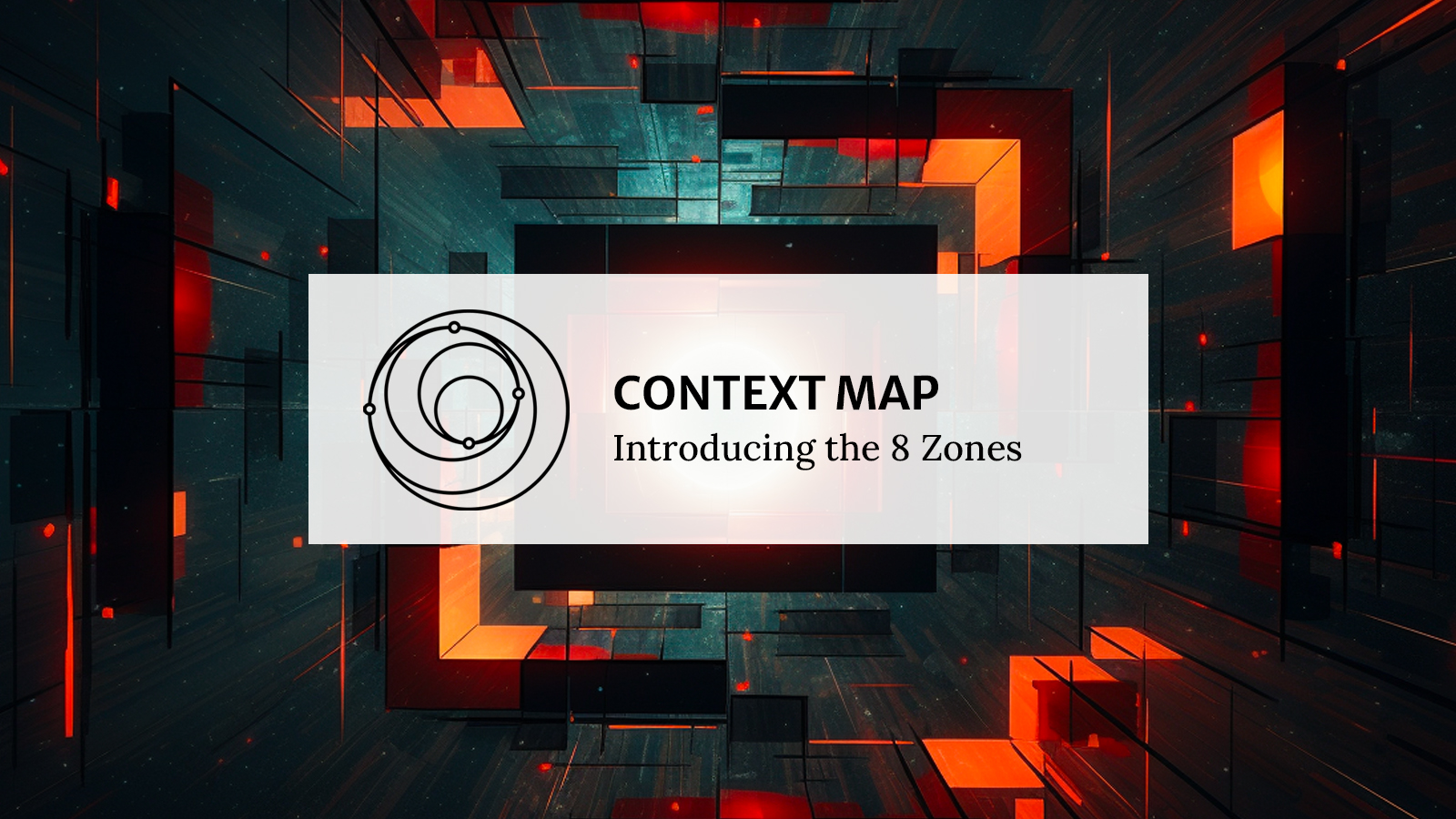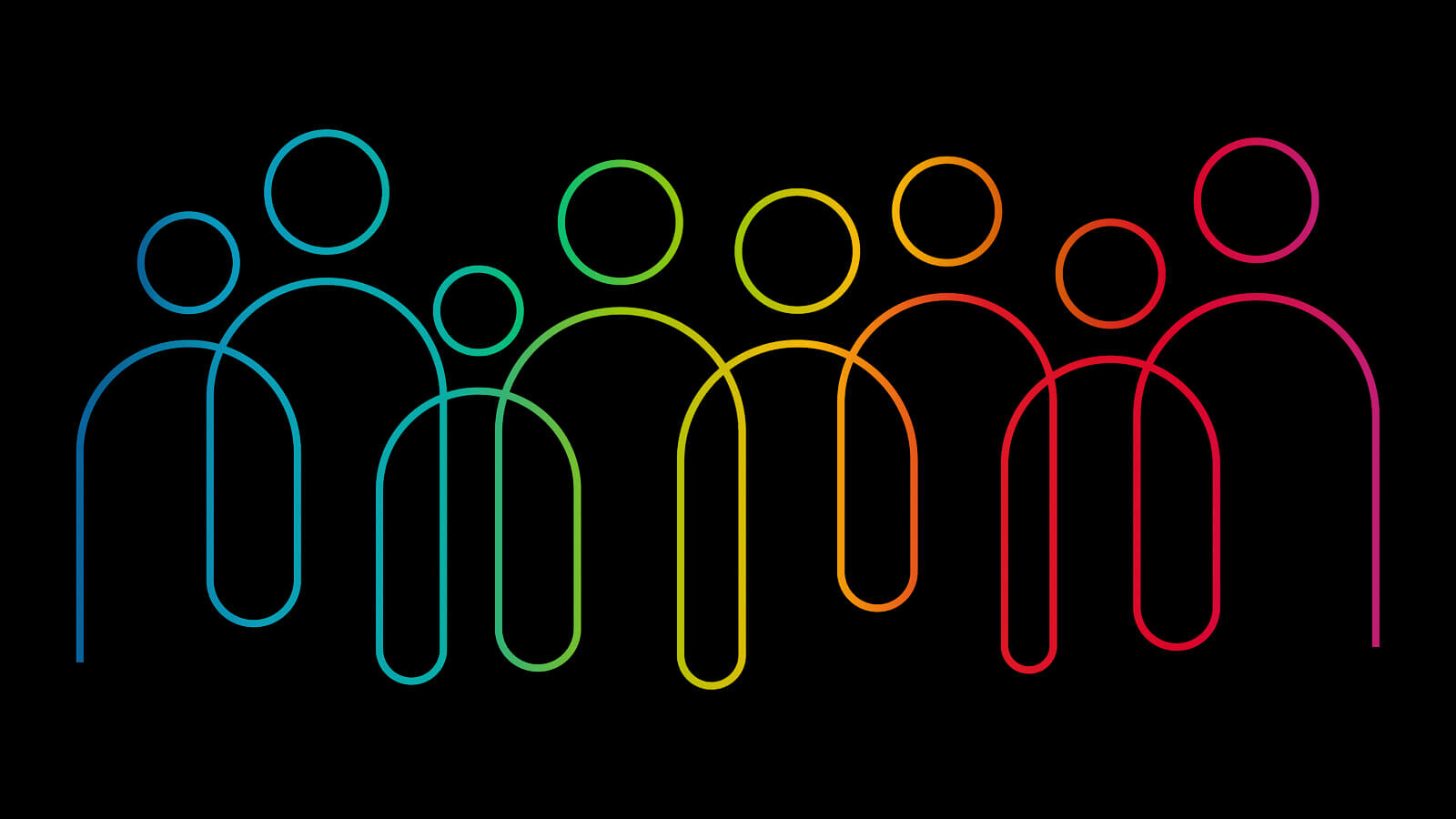On this page you will find:
- a short description and walkthrough, taking us from four quadrants to eight zones,
- a free Context map to help deepen your understanding,
- a collection of media resources to help you apply these zones to different kinds of phenomena — relationships, social justice, and art.
In today’s complex world, understanding the multifaceted nature of our experiences and challenges is more important than ever. The traditional four quadrants of integral theory offer a powerful framework for examining reality from multiple perspectives. However, to fully capture the richness and intricacies of our lives, we need a more detailed approach. This is where the concept of the 8 Zones comes in, providing a more nuanced and actionable perspective. By expanding the four quadrants into eight distinct zones, we can gain a deeper, more holistic understanding of our personal and collective experiences. Whether you’re seeking to enhance personal growth, improve relationships, or foster organizational development, the 8 Zones offer a practical roadmap for navigating the intricacies of life with greater clarity and effectiveness.
In the following video, Corey deVos offers a simple tour through the 8 zones of Integral metatheory, which simply means looking at each of the four quadrants (Being, Doing, Being Together, Doing Together) from 1st-person (“looking as”) and 3rd-person (“looking at”) perspectives, resulting in a profoundly comprehensive and holistic view of reality.
In the presentation, Corey is applying these zones to the realm of relationships, describing each zone as a unique “horizon” where love and intimacy can unfold, and where conflict can emerge. While Corey is using relationship-specific terms to describe these horizons (e.g. “connection”, “dynamics”, “container”, etc.) these eight zones can be more broadly applied to any number of topics and phenomena. Below, you will find examples of how these zones can be applied in various contexts.
Understanding the 8 zones of Integral Metatheory is crucial as it provides a multidimensional framework for navigating complex human experiences. By integrating diverse perspectives, this approach fosters a deeper comprehension of interpersonal dynamics and social issues, ultimately promoting more effective and compassionate solutions. Whether applied to relationships, social justice, or personal development, the 8 zones offer a powerful tool for enhancing our capacity to address and resolve conflicts, enrich our connections, and create a more inclusive and harmonious world.
Integral 101: From the Four Quadrants to the Eight Zones
The 8 Zone framework is built upon the foundation of the four quadrants, which represent the four fundamental dimensions of human experience: individual-interior (“Being”), individual-exterior (“Doing”), collective interior (“Being Together”), and collective-exterior (“Doing Together”). Each of these quadrants offers a unique perspective on the nature of reality and human interaction:
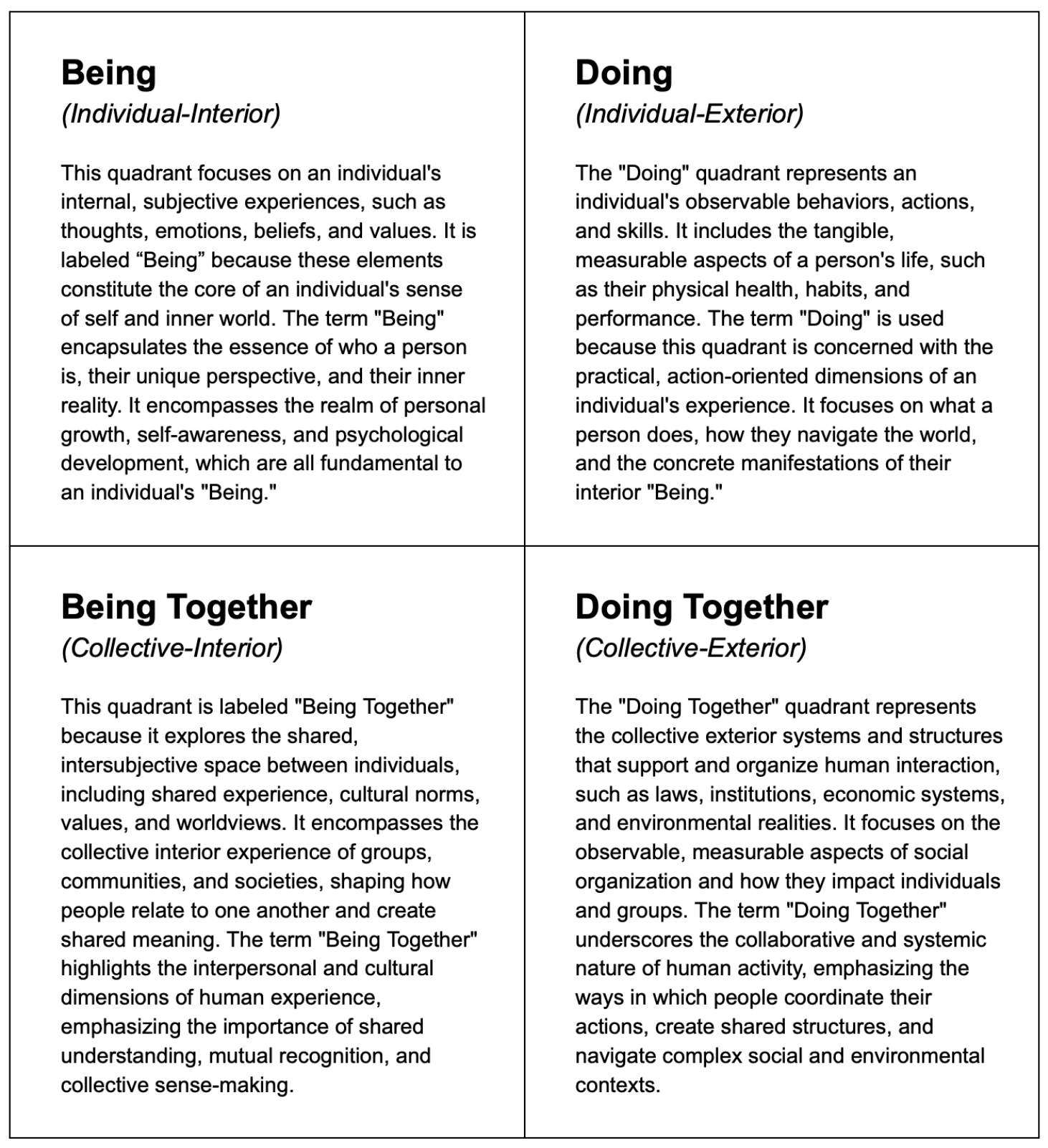
By examining each of these four quadrants from both an “inside” (1st-person) and an “outside” (3rd-person) perspective, we arrive at the 8 Zones. These 8 Zones provide a comprehensive framework for understanding the complexities of human experience and relationships:
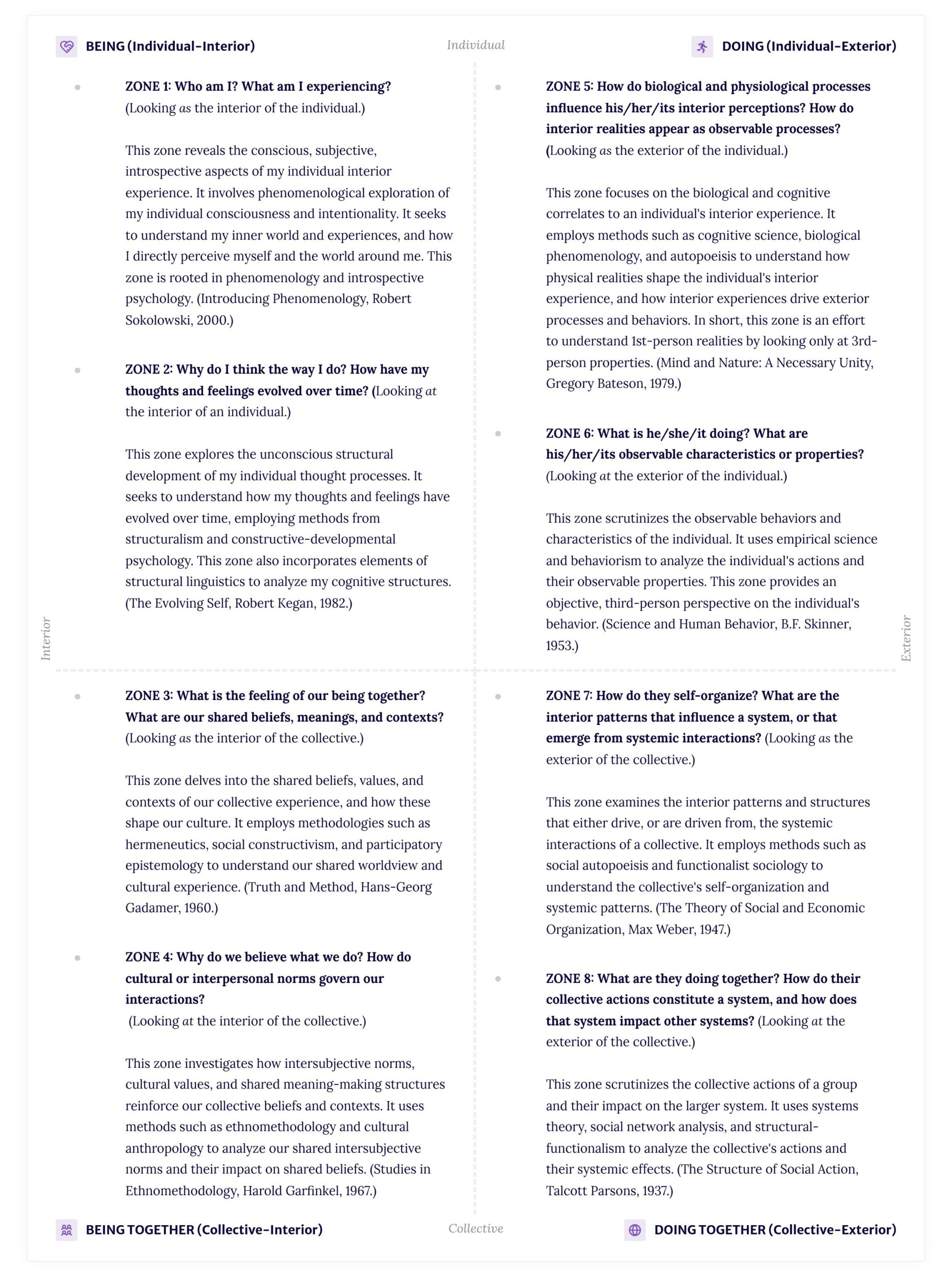
For example, when I look at my own Upper-Left quadrant (“Being”) from the inside, from a 1st-person perspective, I can see my own inner experiences, consciousness, and self-perceptions. All of these arise in my Zone 1 awareness. And if you were to look at my Upper-Left quadrant from the outside, from a 3rd-person perspective, you would see the various psychological patterns, developmental structures, and shadow elements that shape my unconscious in Zone 2.
Similarly, when we feel into our shared Lower-Left quadrant (“Being Together”) from the inside, we reveal the depth of our mutual understanding, the quality of our connection, and the felt resonance between us, all of which describe our overall “we-space” in Zone 3. And if someone else were to view our intersubjective relationship from the outside, they would observe the various Zone 4 dynamics, norms, and patterns that govern our we-space.
By applying this inside/outside perspective to each of the four quadrants, we create a holistic map of the 8 Horizons, which encompasses the full spectrum of individual, collective, interior, exterior dimensions of human experience and relationships.
 Context Visualization
Context Visualization
The 8 Zones of Knowing provide a comprehensive framework for understanding the multifaceted nature of knowledge. By categorizing knowledge into these distinct zones, we can appreciate the depth and breadth of human understanding, from the deeply personal insights of an individual to the vast structures and systems that shape collective understanding.
These 8 Zones describe how we perceive, disclose, and experience reality, in all its fundamental dimensions. They help us create the most complete mental maps and models as possible. These 8 zones describe how reality arises within our Zone 1 awareness — how our individual interiors are experiencing, reflecting, and intersecting with the rest of reality. It helps us think more clearly and more comprehensively about other subjects, other objects, other groups and systems, and even ourselves, all of which are arising within your own Zone 1 phenomenological space, right now.
Note: These Context Maps are in many cases works in progress, and may be updated over time.
Applying the 8 Zones
The 8 Horizons of Love
Corey deVos and Keith Witt
Corey highlights the eight fundamental territories or horizons within which all relationships unfold, detailing the common factors, everyday examples, key questions, common challenges, and the risks of neglecting each of these horizons. These 8 horizons represent the essential aspects of relationships that need our ongoing attention and care. Understanding and addressing these horizons is crucial for fostering healthy and resilient relationships, allowing the engine of the relationship to fire on all eight cylinders. Neglect any of these, and problems will inevitably arise.
Integral Critical Theory: The 8 Zones of Racism
Ken Wilber and Corey deVos
Ken Wilber and Corey deVos delve into the intricate application of the eight zones of Integral Metatheory to the pervasive issues of race and racism. This insightful discussion sheds light on how these primordial perspectives can be utilized to address and understand the multifaceted nature of racism, offering a holistic approach to personal, cultural, and social transformation.
Inhabit: Your Perspective
Corey deVos, Bruce Alderman, and Ryan Oelke
Taken together, these eight zones refer to the most fundamental perspectives that we can take on any phenomenon, and are most often used to organize and situate all of the major methodologies and schools of thought that we use to generate and confirm our knowledge. But this isn’t another hyper-cognitive discussion of integral theory. This is more of a “perspectival yoga”, and we hope that by the time you have finished watching this episode you will be more familiar with these fundamental dimensions of your experience, right now in this very moment.
The 8 Perspectival Zones of Emergence
Ken Wilber
Ken Wilber and Dennis Wittrock delve into the eight perspectival zones, discussing how these zones offer a comprehensive lens through which to understand various dimensions of human experience and cognition. The conversation touches on the developmental stages required to fully engage with these zones, emphasizing that higher cognitive capacities are necessary to grasp the complex methodologies that are associated with several of these zones. The dialogue underscores the importance of integrating multiple perspectives to foster deeper understanding and coherence in both individual and collective contexts.
About Corey deVos
Corey W. deVos is editor and producer of Integral Life. He has worked for Integral Institute/Integal Life since Spring of 2003, and has been a student of integral theory and practice since 1996. Corey is also a professional woodworker, and many of his artworks can be found in his VisionLogix art gallery.

